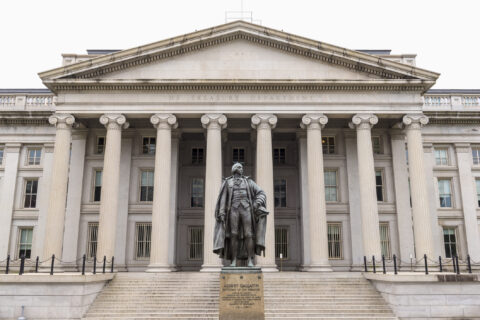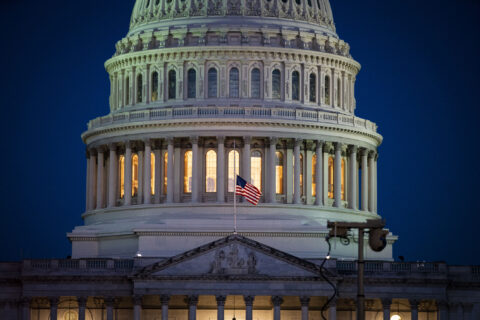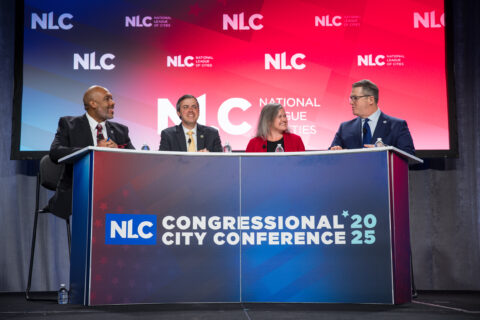Co-authored by Claire Chan, the Manager of Research and Federal Relations at the Georgia Municipal Association
The April 30, 2025 reporting deadline for the American Rescue Plan Act’s (ARPA) State and Local Fiscal Recovery Funds (SLFRF) is rapidly approaching, and many local governments have questions about how to accurately and effectively draft their reporting language. Below, we provide guidance on frequently asked questions (FAQs) and offer examples of what to do — and what to avoid.
Project Descriptions: Key Guidelines
Project descriptions must be detailed enough to convey the major activities involved and must be between 50 and 250 words.
Avoid Non-Descriptive Language
Poor descriptions fail to provide insight into how funds are being used. Avoid relying on vague terms alone, such as:
- “Revenue replacement”
- “Revenue loss”
- “Standard Allowance”
Examples of Insufficient Descriptions
- “Funds used for COVID employee pay.”
- “General Fund Replacement.”
- “Multiple Government Services.”
- “Lost Revenue Replacement.”
- “Standard Allowance for Revenue Loss – Replacement Equipment.”
- “Funds will be used for government services throughout the project period to include: daily government operations, infrastructure repairs, support for personnel and other allowable activities.”
Best Practices for Strong Project Descriptions
To ensure compliance and clarity:
- Be specific and descriptive.
- Explain the who, what, where, when and why.
Examples of Effective Reporting
- “City X built a new facility that will house a medical center, public library and community room. The previous medical facility was a double-wide mobile home that was renovated and purchased over 25 years ago and only had a part-time physician. The library was in an old building that suffered flood damage due to a broken pipe in 2023. The city did not have a community room that was available for different community functions. We are working to obtain a full-time physician to serve our community instead of residents having to travel a minimum of 15 miles one-way to see a doctor. The new facility will open in late summer 2025. We have also slated ARPA SLFRF funds by city council resolution to upgrade our city park, construct a walking track to encourage health and exercise, and help to fund the emergency rescue team with equipment.”
- “Funds will be used to repave aging roadways within city limits, maintaining transportation needs for the community. Funds will be utilized to cover labor, materials, and professional fees associated with the paving project. Project plan specifics: Tar and gravel paving of XXX Roads.”
- “Replaced all cloth chairs with chairs that have cleanable vinyl surfaces, gave a one-time pay increase to all 42 city employees, replaced all bathroom features in City Hall and the Community Center with touchless fixtures, purchased three used vehicles for the police department, replaced 1 outdated computer for City Hall.”
Frequently Asked Questions (FAQs)
What is a “Reporting Project”?
A grouping of closely related activities that together are intended to achieve a specific goal or are directed toward a common purpose.
What Time Period Does the Report Cover?
Annual reporters must report on the following timeframes in the April 2025 report:
- Current period obligation: April 1, 2024 – Dec 31, 2024
- Cumulative obligation: Date of Award – Dec 31, 2024
- Current period expenditure: April 1, 2024 – March 31, 2025
- Cumulative expenditure: Date of Award – March 31, 2025
What Information Do I Have to Provide for a Project?
Recipients must provide:
- Project name.
- Identification number (which is created by the recipient).
- Project expenditure category.
- Detailed description.
- Status of completion.
What are the Different Project Expenditure Categories?
- Public Health Impacts
- COVID-19 Mitigation and Prevention
- Community Violence Interventions
- Behavioral Health
- Other
- Negative Economic Impacts
- Assistance to Households
- Assistance to Small Businesses
- Assistance to Non-Profits
- Aid to Impacted Industries
- Other
- Public Sector Capacity
- Payroll, rehiring, administration needs, and other
- Premium Pay
- Water, Sewer & Broadband
- Revenue Replacement
- Revenue Replacement is the most flexible funding available to municipalities under ARPA SLFRF. Each recipient can classify at least $10 million as revenue replacement or use the Treasury’s formula to calculate actual revenue loss due to the pandemic. To read more about how to properly report Revenue Replacement please see this blog from NLC.
- Administrative Expenses
- Transfers to Other Units of Governments
- Emergency Relief from Natural Disasters
- Surface Transportation Projects
- Title I Projects (CDBG-eligible activities)
If you have specific questions, feel free to email those of us at NLC who are closely monitoring this issue. I can be reached at moreno@nlc.org.
Stay Informed
NLC is committed to helping cities, towns and villages cross the finish line in terms of reporting and project closeout. Visit our ARPA State and Local Fiscal Recovery Funds page for new blogs and information as it is released by the Department of Treasury.







